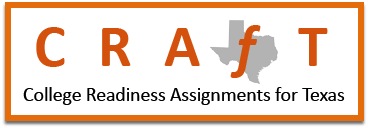![]() V. Cross-Disciplinary Themes VII. Chemistry
V. Cross-Disciplinary Themes VII. Chemistry![]()
A. Structure and function of cells
1. Know that although all cells share basic features, cells differentiate to carry out specialized functions.
a. Describe criteria for recognizing different functional cell types and give examples of such types including nervous, epithelial, muscle, and other cells.
b. Name and describe basic cell types found in living organisms.
c. Give examples of particular modifications of cells, and explain how these modifications are related to each type’s function in an organism.
d. Recognize and describe major features that distinguish plant, animal, and fungal cells.
2. Explain how cells can be categorized into two major types: prokaryotic and eukaryotic, and describe major features that distinguish one from the other.
a. Describe or recognize major features that distinguish prokaryotic from eukaryotic cells.
3. Describe the structure and function of major sub-cellular organelles.
a. Describe or recognize the appearance or structure of ribosomes, cytoplasmic membrane, chromosomes, cell wall, eukaryotic nucleus, nucleolus, lysosomes, vacuoles, cytoskeleton, centrioles, cilia, flagella, Golgi apparatus, chloroplasts, mitochondria, and endoplasmic reticulum, and describe important functions of each.
4. Describe the major features of mitosis and relate this process to growth and asexual reproduction.
a. Draw, describe, and place in sequence the various stages of mitosis.
b. Identify the stages of mitosis when presented on a microscope slide, computer animation, or drawing during a practical lab exam.
c. Arrange pictures or word descriptions of the stages of mitosis into correct sequence and describe or explain any significant events occurring in each stage.
5. Understand the process of cytokinesis in plant and animal cells and how this process is related to growth.
a. Describe the major features and events of cytokinesis with pictures or word descriptions.
6. Know the structure of membranes and how this relates to permeability.
a. Describe and explain the processes of osmosis and diffusion, and explain how the structure of plasma membranes permits and influences these events.
B. Biochemistry
1. Understand the major categories of biological molecules: lipids, carbohydrates, proteins, and nucleic acids.
a. Describe the role of each type of biological molecule within a living system.
b. Identify a biological molecule based on its formula and structure.
c. Describe the major role of each biological molecule in biological structure and metabolism.
2. Describe the structure and function of enzymes.
a. Describe the environmental effects (e.g., pH, temperature) on enzyme activity and explain why these affect enzymes.
b. Give specific examples of enzymes and why they are important in the human body.
c. Describe the chemical structure of proteins, including amino acids, peptide bonds, and polypeptide formation.
d. Describe the effects of enzymes on reaction rates, including effects on activation energy requirements.
3. Describe the major features and chemical events of photosynthesis.
a. Explain the importance of chlorophyll.
b. Describe patterns of electron flow through light reaction events.
c. Describe significant features of the Calvin cycle.
4. Describe the major features and chemical events of cellular respiration.
a. Describe what Adenosine Triphosphate (ATP) is and its importance as an energy carrier molecule.
b. Describe major features of glycolysis, Krebs cycle, electron transport system, and chemiosmosis.
5. Know how organisms respond to presence or absence of oxygen, including mechanisms of fermentation.
a. Conduct lab experiments regarding fermentation, respiration, and photosynthesis.
b. Describe the role of oxygen in respiration and describe pathways of electron flow in the absence of oxygen.
c. Explain the advantages and disadvantages of fermentation and aerobic respiration.
6. Understand coupled reaction processes and describe the role of ATP in energy coupling and transfer.
a. Describe reactions that produce and consume ATP.
C. Evolution and populations
1. Know multiple categories of evidence for evolutionary change and how this evidence is used to infer evolutionary relationships among organisms.
a. Describe features of biogeography/ plate tectonics, fossil record, metabolism, DNA/protein sequences, homology, embryology, artificial selection/ agriculture, and antibiotic resistance that contribute to our understanding of evolutionary change.
2. Recognize variations in population sizes, including extinction, and describe mechanisms and conditions that produce these variations.
a. Describe mechanisms that produce variations in population sizes.b. Recognize, describe, and explain typical patterns of change in population size (e.g., the logistic growth curve).
c. Describe particular examples of extinction and describe conditions that produced these extinctions (e.g., Permian, Cretaceous dinosaur, wooly mammoth, passenger pigeon).
d. Know that populations of organisms have changed, and continue to change over time, showing patterns of descent with modification from common ancestors to produce the organismal diversity observed today.
e. Describe general features of the history of life on Earth, including generally accepted dates and sequence of the geologic time scale and characteristics of major groups of organisms present during these time periods.
f. Describe mechanisms that produce change in populations from generation to generation (e.g., artificial selection, natural selection, genetic drift, mutation, recombination).
g. Describe and explain processes and major events in natural selection, genetic drift, mutation, etc., and distinguish these processes from each other.
D. Molecular genetics and heredity
1. Understand Mendel’s laws of inheritance.
a. Describe the laws of Mendelian genetics.
b. Predict outcomes of a variety of test crosses and be able to predict parental genotypes for offspring.
c. Use the laws of inheritance to carry out numerical calculations analyzing and predicting genetic characteristics of parents and offspring.
d. Read a “genetics problem” and identify the information needed to complete a Punnett square.
e. Determine phenotypes and genotypes of offspring from a given set of data about parental phenotypes and/or genotypes, expressing these features in numerical terms for cases of monohybrid and dihybrid crosses and other typical cases.
f. Determine phenotypes and genotypes of parents from a given set of data about offspring phenotypes and/or genotypes, expressing these features in numerical terms.
2. Know modifications to Mendel’s laws.
a. Determine phenotypes and genotypes of offspring from a given data set about parental phenotypes and/or genotypes; express these features in numerical terms for cases of co-dominance, quantitative inheritance, sex-linked traits, and other typical cases.
3. Understand the molecular structures and functions of nucleic acids.
a. Research a genetic disorder and describe the cause of the disorder.
b. Describe in words or pictures the molecular structure of DNA, RNA, and proteins.
c. Describe in words or pictures the molecular events of replication, transcription, translation, and mutation.
d. Describe the events and processes of molecular genetics: DNA controls synthesis of several types of RNA, RNA molecules plus proteins cooperate to synthesize new proteins, and proteins control structure and metabolism of cells.
e. Describe the processes of electrophoresis and polymerase chain reaction, and explain their function in identifying DNA, RNA, and proteins.
4. Understand simple principles of population genetics and describe characteristics of a Hardy-Weinberg population.
a. Calculate phenotypes and genotypes of offspring populations from a given set of data about phenotypes and/or genotypes present in a population, using the Hardy- Weinberg equations.
b. Describe and explain features of a population that must be present in order for Hardy-Weinberg calculations to be accurate.
5. Describe the major features of meiosis and relate this process to Mendel’s laws of inheritance.
a. Explain the events of meiosis and the significance of these events to maintain chromosomal numbers.
b. Explain how the events of meiosis produce the genetic effects described by Mendel’s laws of inheritance.
c. Arrange pictures or word descriptions of the stages of meiosis into their correct sequence and describe or explain any significant events occurring in each stage.
d. Compare and contrast mitosis and meiosis.
E. Classification and taxonomy
1. Know ways in which living things can be classified based on each organism’s internal and external structure, development, and relatedness of DNA sequences.
a. Explain the relationship between DNA sequences and physical characteristics.
b. Describe the characteristics of each taxon and explain the significance in separating organisms.
c. Distinguish similarities and differences among a given set of pictures or drawings of vertebrates during their development.
d. Describe species diversity and cladistics, including the types of evidence and procedures that can be used to construct diagrams (e.g., phylogenetic trees).
e. Construct cladograms and/or phylogenetic trees from simple data sets for major groups of organisms.
f. Determine the correct classification and taxonomy of organisms from narrative or pictorial descriptions.
F. Systems and homeostasis
1. Know that organisms possess various structures and processes (feedback loops) that maintain steady internal conditions.
a. Describe examples of organisms that possess various structures and processes (feedback loops) that maintain steady internal conditions.
b. Describe examples of homeostasis (e.g., temperature regulation, osmotic balance, glucose levels) and describe the major features of feedback loops that produce such homeostasis.
2. Describe, compare, and contrast structures and processes that allow gas exchange, nutrient uptake and processing, waste excretion, nervous and hormonal regulation, and reproduction in plants, animals, and fungi; give examples of each.
a. Describe common gas exchange systems in plants and animals including anatomical features and functions.
b. Describe common nutrient acquisition systems in plants, animals, and fungi, including anatomical features and functions.
c. Describe common waste excretion systems in plants and animals, including anatomical features and functions.
d. Describe common nervous/hormonal control systems in plants and animals, including anatomical features and functions.
e. Describe common reproductive systems in plants, animals, and fungi, including anatomical features and functions.
G. Ecology
1. Identify Earth’s major biomes, giving their locations, typical climate conditions, and characteristic organisms.
a. Name and describe Earth’s major biomes, including tundra, boreal forests, temperate deciduous forests, grasslands, deserts, tropical rain forests, estuaries and other wetlands, and marine biomes, including their typical locations, the typical organisms found in each, and important physical factors (e.g., temperature, rainfall rates) that produce these distribution patterns.
2. Know patterns of energy flow and material cycling in Earth’s ecosystems.
a. Describe patterns of energy flow and nutrient cycling through ecosystems.
b. Describe and explain a trophic pyramid, including descriptions of typical organisms to be found at each trophic level in an ecosystem.
c. Describe patterns of energy flow and nutrient cycling through ecosystems including the role of microorganisms.
3. Understand typical forms of organismal behavior.
a. Describe and give examples of organismal behavior (e.g., fixed action patterns, releasers, fight-or-flight responses, territorial displays, circadian rhythms).
4. Know the process of succession.


 Show Printable Version
Show Printable Version




